Everything You Need to Know About An Arctic Cruise
If you’re intrigued by a cruise in the Arctic, you’re not alone. “The Arctic has always been an incredibly alluring destination,” says Conrad Combrink, Silversea’s senior vice president of Expeditions, Destination and Itinerary Management (he explains more in the film clip below). “I love the Arctic because it makes me feel like I’m on a different planet.”
Are you curious, too? We’ll bet you’ve got a lot of questions, and hopefully we can provide you the answers you are looking for.
What exactly is the Arctic?
The Arctic, unlike Antarctica, is not rooted in any one landmass. Instead, scientists tend to define the Arctic as the area beyond the Arctic Circle, the line circling the globe about 66 degrees north of the Equator. At the winter solstice each December, north of this line the sun never rises; in June at the summer solstice, the sun doesn’t set. Close to the North Pole, the region is covered in sea ice year round, although the permanent ice is shrinking, thanks to global warming.

Seven countries extend into the Arctic. Norway, Greenland, Canada and the U.S. state of Alaska have extensive coastline in the Arctic. Sweden and Finland do not have coastline in the Arctic. Russia has the longest stretch of Arctic territory but no cruise ships at present. Norway’s isolated Svalbard archipelago is one of the land masses closest to the North Pole. Just outside the Arctic Circle: Iceland.
Why visit the Arctic?

The northern polar region is one of the most remote and untouched places on Earth. In summer, the midnight sun shimmers over its carpet of ice, revealing a subtle landscape of tiny blossoms and trees no taller than a thumbnail. Glaciers converge with the sea, spilling and heaving into chunks that dot the water like icy jewels. Reindeer are real here, and so are polar bears.

Visiting here evokes respect. Respect for brave – or was it foolhardy? – explorers of the early 20th century such as Robert Peary and Roald Amundsen. Respect for the indigenous peoples who long ago learned to live in harmony with this harsh environment. Respect for a thawing ice cap that is affecting fish and wildlife patterns across the globe.
If you want to learn more about climate shift and its impacts, the Arctic is the place. To see unusual animals? Also the Arctic. To learn more about indigenous peoples? Arctic. If you want to enjoy a new Silversea itinerary? Right again if you said the Arctic. Here’s what you’ll want to know about visiting the Arctic.
What’s the best way to get to the Arctic?
Direct private charter flights are offered on select voyages. Cruises with embarkation or disembarkation in Longyearbyen include a charter flight between Oslo and Longyearbyen. Cruises with embarkation or disembarkation in Nuuk, Iqaluit and Churchill include flights to/from Montreal.
What are these destinations like?
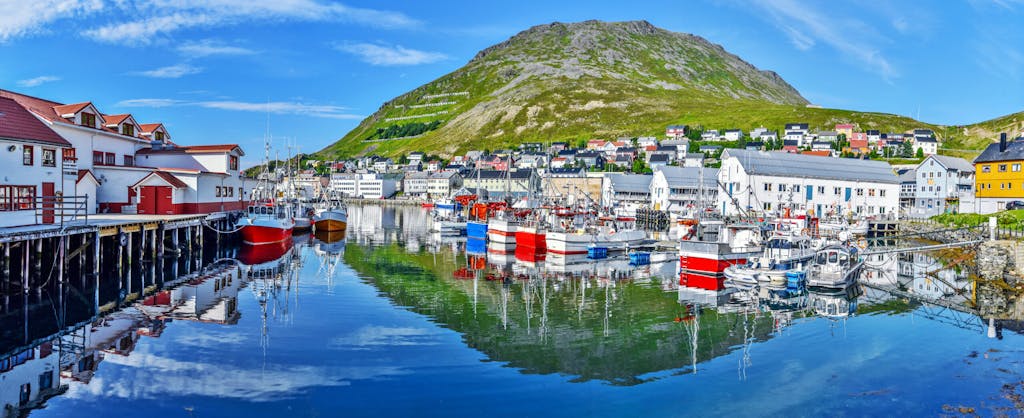
Norway has been a popular cruise destination for decades, and towns as far north as Honningsvag – Europe’s most northly point – receive traditional cruise ships. Svalbard lies midway between mainland Norway and the North Pole. It’s home to about 2,500 people, but 60 percent of Svalbard is covered in glaciers, creating long tongues of ice reaching to the sea.
It’s an exciting destination for those seeking austere vistas and wildlife in a wild frontier. Reindeer and Arctic fox are native, but Svalbard is best known for hundreds of resident polar bears.
South of Svalbard is Jan Mayen, a desolate, uninhabited island that is home to the world’s northernmost volcano and several breeding seabirds.
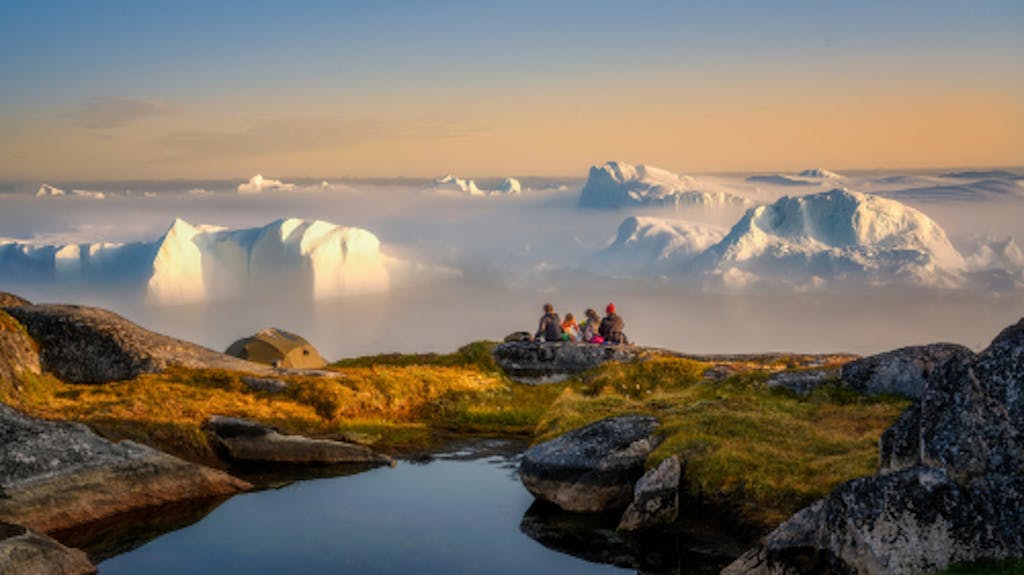
Greenland is the world’s largest island, more than five times the size of California. It is home to about 56,000 people and is the least densely populated land mass in the world. Credit that ice sheet, which covers about 82 percent of the island, for the low density; the bulk of the population lives almost exclusively along the southwest coast.
Canada is the world’s second largest country (by land mass) with huge islands sitting north of the Arctic Circle — especially Baffin Island. Here, Isabella Bay shelters narwhals and bowhead whales. Monumental Island rewards visitors with views of polar bear dens and fjords in the north, lined with slick walls of granite towering thousands of feet.
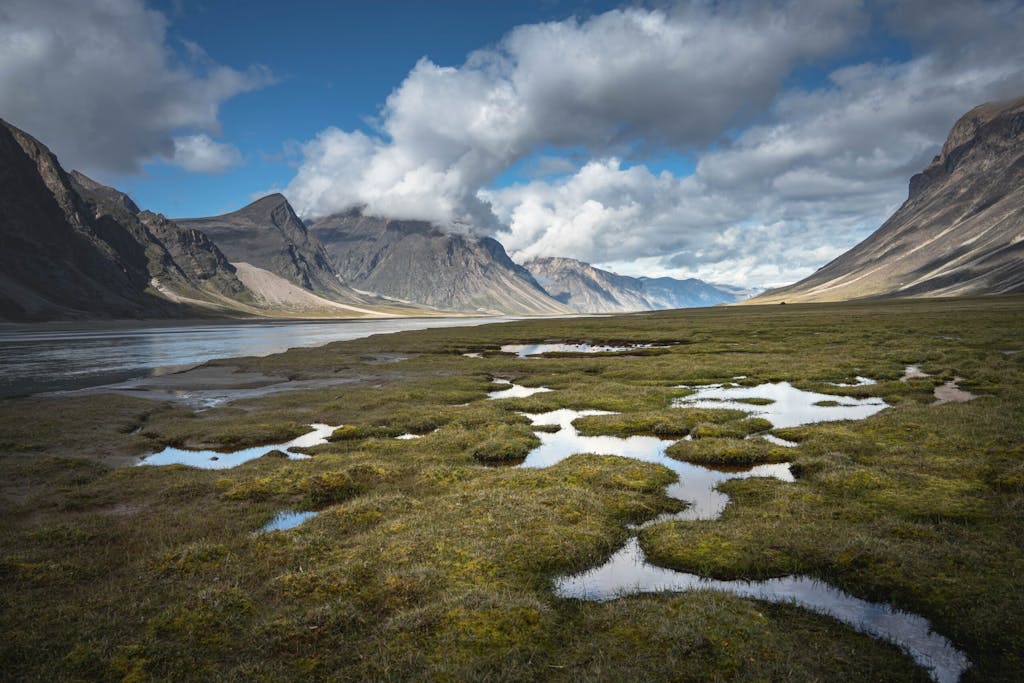
Indigenous communities are also a feature of cruises to Arctic Canada, and the territory of Nunavut – one-fifth of Canada’s land mass – is home to about 40,000 people. A few itineraries will transit the Northwest Passage in late summer reaching tiny, fascinating communities on the way to Alaska.
Get yourself prepared by learning these 7 facts about the Northwest Passage.
With the rise of Instagram, “Game of Thrones” and Scandinavian chanteuse Björk, Iceland has emerged as one of Europe’s trendiest destinations. Visit Iceland for robust nightlife and culture, abundant outdoor hot springs, and volcanic landscapes riven by waterfalls. A common cruise itinerary encircles the island out of Reykjavik, Iceland’s appealing and well-connected capital, but these are neither Arctic nor expedition cruises, per se.
What will the weather be like?
During the Arctic’s summer cruising season, temperatures can range dramatically, but might be warmer than you expect. For instance, in Illulisat, Greenland, temperatures in July – the warmest month – average a daytime high of 52 degrees Fahrenheit, and an overnight low of 42 degrees. Longyearbyen in Svalbard is farther north, and daytime highs in July there average 47 degrees, dropping to 41 degrees at night. But wind and/or rain can pack a punch, so prepare for the variables by packing plenty of layers.
Is it difficult to get to the Arctic?
As remote places go, the Arctic is relatively accessible and comfortable. Scheduled or charter flights take guests from major airports in Europe to embarkation outposts in Norway, Svalbard, Greenland, northern Canada and Iceland. In summer 2025, United Airlines became the first U.S. airline to offer non-stop flights to Greenland’s Nuuk, from New York.
Although land-based explorations are offered in many places, Silversea’s luxury expedition ships can get farther afield, offer greater comfort and provide such amenities as fine dining, spacious accommodations (all cabins are suites on Silversea) and first-rate service.
Will I get seasick?
Arctic sailings are generally smoother than those at the South Pole. Travelers who want a polar experience without having to cross the sometimes tempestuous Drake Passage, which connects the Atlantic and Pacific oceans in South America and its path to Antarctica, can find it the Arctic. The newest ships – including Silversea’s Silver Endeavour – are equipped with state-of-the-art stabilizers, making the voyage so fluid you might not realize you’re at sea.
Will the Arctic be crowded?
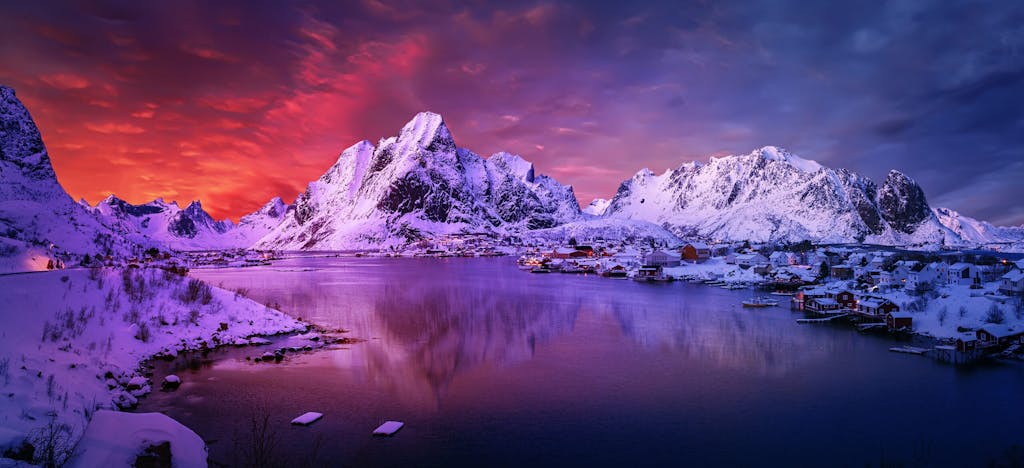
No. You may see other people and ships in ports. But otherwise, your encounters with other people and ships usually will be minimal. Arctic-region governments closely enforce rigid conservation standards. The Association of Arctic Expedition Cruise Operators, or AECO, has its own strict rules designed to preserve the experience for wildlife and for visitors. Stretching over a typical summer season (May to September), AECO estimated 57,000 visitors would enter the cruise port at Svalbard, one popular launch point.
What kind of ships sail to the Arctic?
Luxury lines such as Silversea sail polar-class expedition ships small enough to meet Arctic standards but large enough to feel stable and provide space for popular amenities, including multiple dining venues, a spa and activity equipment that includes Zodiacs and kayaks. The Silver Endeavour carries 200 guests and Silver Wind carries 274 at full capacity.
What is an expedition sailing?
Expedition sailings are focused primarily on the natural environment, with some destinations also incorporating cultural aspects. Onboard experts will help explain what you’re seeing and experiencing. Each voyage has set beginning and end points, but beyond that, itineraries are flexible. To enable guests to view dramatic scenery, wildlife and settlements in safety and comfort, the captain and naturalists check weather conditions and sighting reports to determine each day’s course.
A typical day involves one or two outings, usually by Zodiac or kayak, and a few ports allow ships to dock. Guests are divided into small groups to minimize impact on the environment and ensure that each guest gets great views and can ask plenty of questions and interact with the expert naturalists who accompany every excursion. On expedition ships, most shore excursions are covered by the all-inclusive cruise fare, and joining any day’s specific outing is your choice.
Evenings generally include a presentation by the expedition staff, who reviews the day past and previews the day to come. There will also be lectures covering specific topics related to the destinations, such as local whales or bird life, glaciology and climatology and more.
What is a Zodiac?

Zodiacs are inflatable, portable boats, typically with a rigid hull. They enable passengers to get closer views of wildlife, glacier faces, bird-filled cliffs and ice chunks crackling in a strange and cheery symphony. Lucky guests will witness glaciers calve, when immense blocks of ice sheer off from the face of a tidewater glacier and crash into the sea.
Here’s how you navigate these small craft: You’ll sit on the rim of the Zodiac, facing in, without anything against your back. Everyone holds onto a rope wrapping the inside of the craft, behind the knees. Lifejackets are required. After one or two Zodiac outings, these excursions may become a highlight of your cruise.
Silversea’s passenger ships are designed with special stairs and platforms to enable guests to step in and out of Zodiacs. Staff is on hand to help those with mobility issues.
What is sea kayaking like in the Arctic?
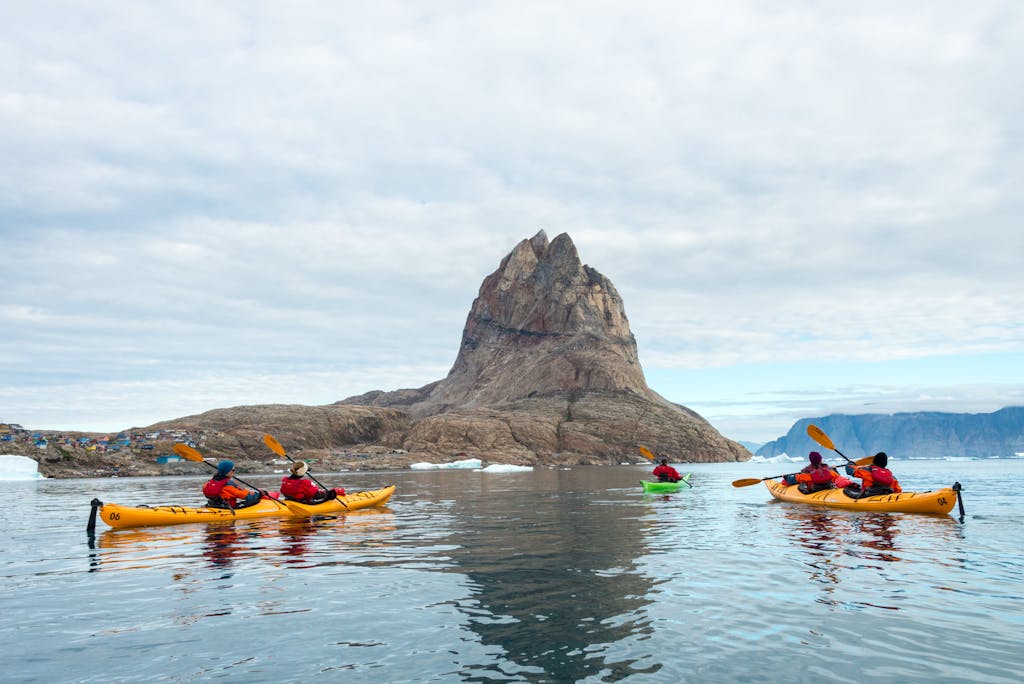
The kayak, originating from the Greenlandic word qajaq, was conceived centuries ago by the indigenous Aleut, Inuit and Yupik people as a way of traveling, fishing and hunting the roadless coastal areas of the Arctic. Most expedition ships carry a small fleet of two-person sea kayaks for paddling amid the icebergs and close to cliffs where seabirds nest. Lucky kayakers might spot whales – from a safe distance, of course. In most cases, some kayaking experience is required before signing up for an excursion, and expert guides will take precautions to ensure the safety of kayakers who have minimal experience.
Although kayaking in icy open water looks cold, ample gear is provided to keep guests dry and warm, making it a surprisingly comfortable, placid experience.
What wildlife will I see, and how close will I get?

A major lure to the Arctic is the polar bear. Global warming has thinned and thawed ice, diminishing the polar bear’s habitat and threatening the species. Don’t expect to get cozy. A hungry bear will eat almost any living thing it can catch, including humans. Travel operators take great care to keep people and bears far apart. Your best bet for an up-close polar bear viewing is through a long lens and most likely in Svalbard or Canada.
One thing you won’t see: penguins, a species found only in the Southern Hemisphere.
Your guide to Arctic mammals
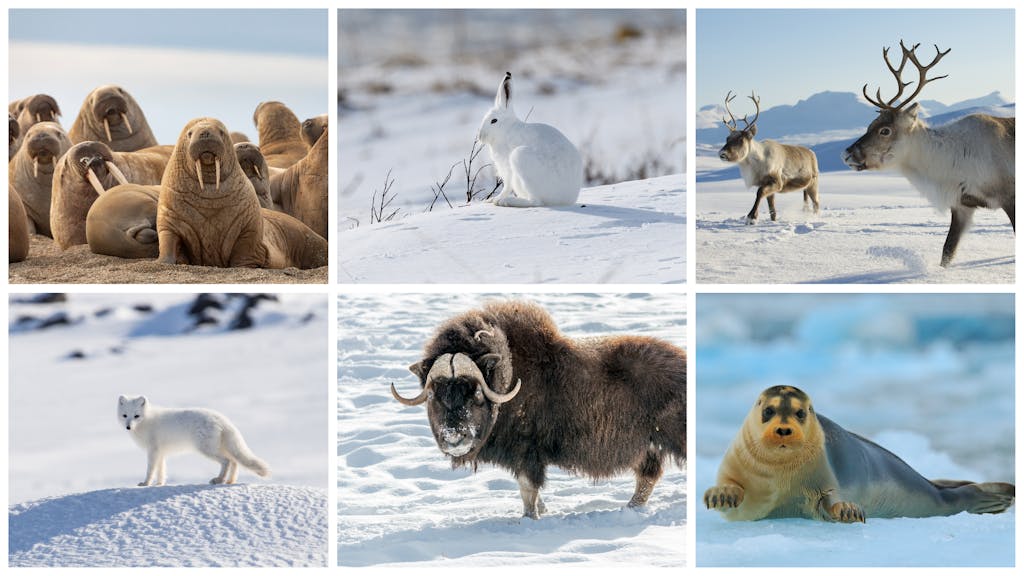
Although polar bears are the main draw, creatures including musk ox, reindeer, seals, walrus, Arctic hares, and the fast-darting Arctic fox are worthy of attention.
Your guide to Arctic birds
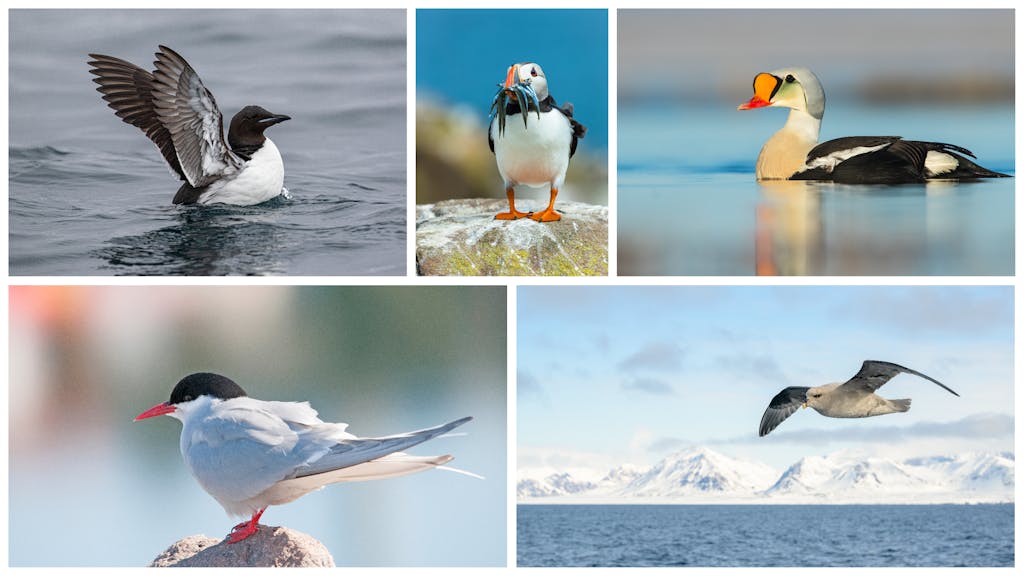
Birders can catch sightings of Arctic tern, King eider, Brünnich’s guillemot, puffin and northern fulmar.
Your guide to Arctic whales
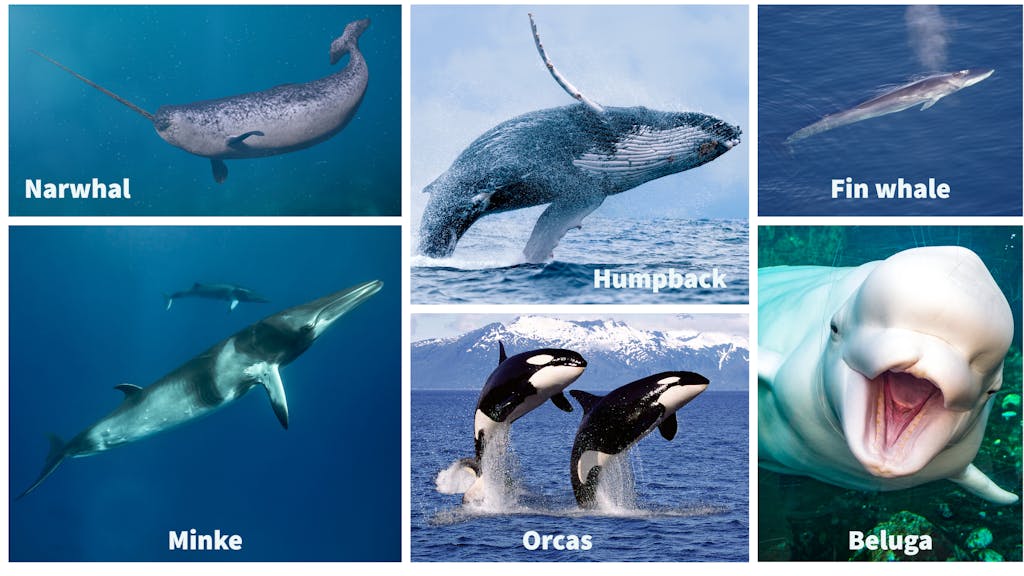
As for Cetacean life in the Arctic, you may spot these above; fin whales are sometimes called finback whales, and narwhals are sometimes spelled narwhales but are definitely odd-looking no matter how you spell it. The orcas may look cute while they’re frolicking, but they are the sea’s apex predators, commonly called killer whales. Typically, killer whales are not dangerous to humans because they aren’t on their radar of delicious morsels the way fish, squid, seals and sometimes other whale species might be.
Your guide to Arctic flora and fauna
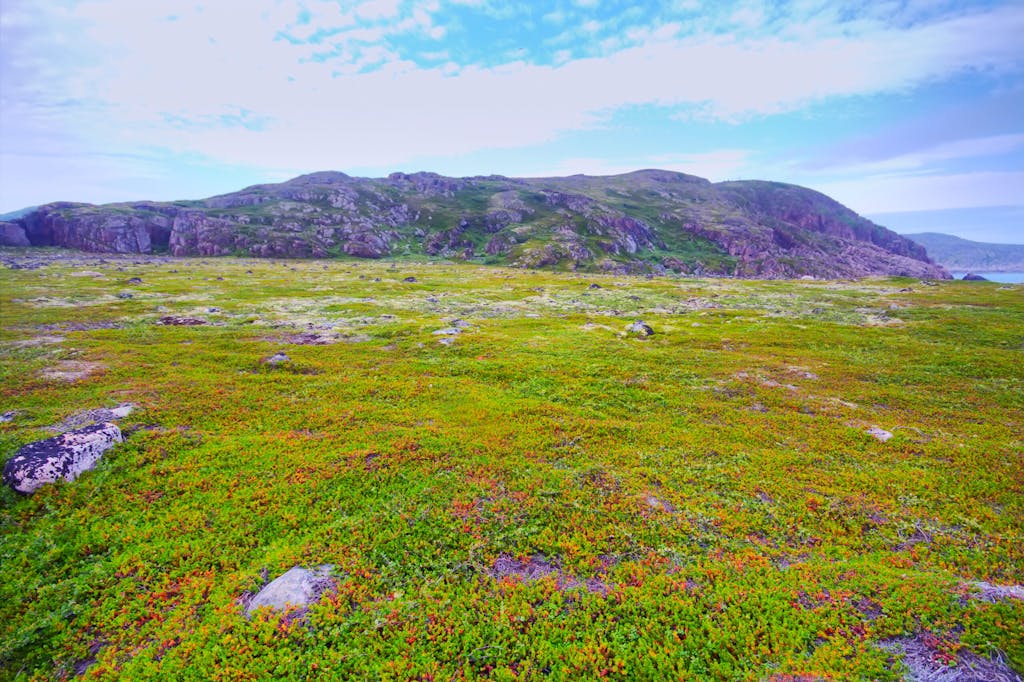
You won’t find much plant life growing taller than your knees, but flora includes mosses, lichens, sedges and grasses (yes, Greenland really is green).
What public spaces will I find aboard ship?

All of Silversea’s expedition ships have a minimum of four dining venues, along with standard cruise-ship spaces such as lounges, a lobby, swimming pool and whirlpools, a spa and fitness center, and a theater. Expedition ships also have a mud room where guests can gear up for or pare down after Zodiac excursions, kayak trips and hiking.
What are the staterooms like?
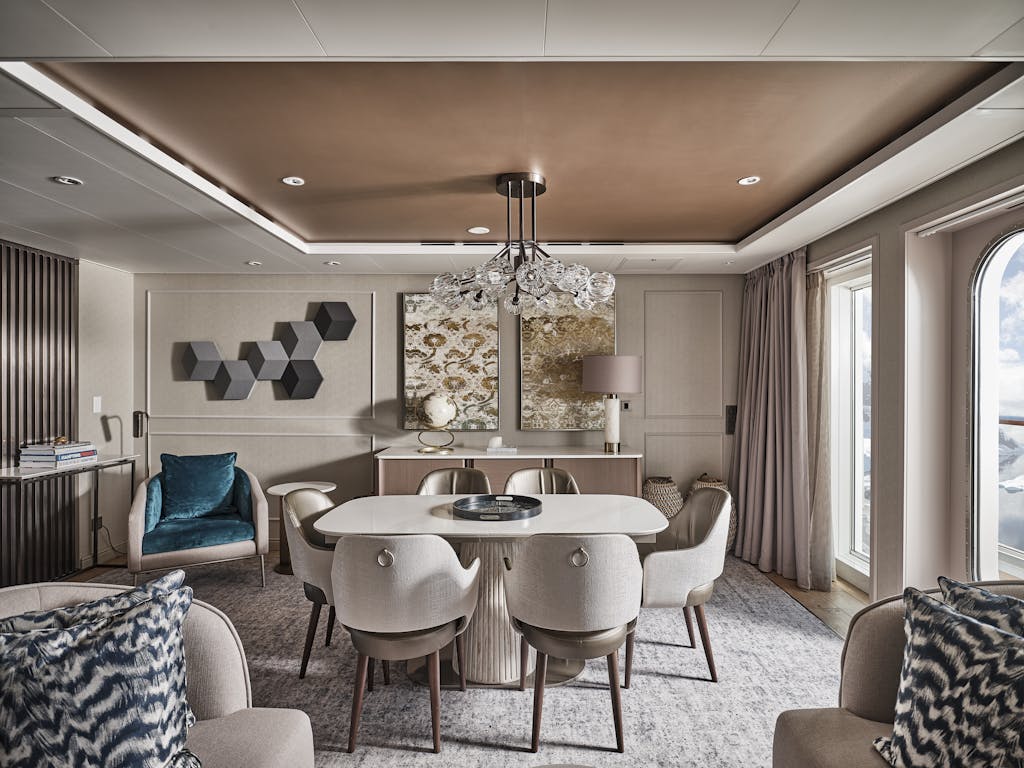
On Silversea, every accommodation is a suite that has plush beds and sitting areas. On Silversea, all suites have views – that’s why you’ve come to the Arctic, after all – and most have balconies. All come with maid service and a butler, who will help ensure your gear is clean and your martini crisp.
What clothing will I need? How should I pack?

First, leave your jeans at home, at least for wearing on an expedition outing. Because they are cotton, they will hold moisture against your skin, which will make you chilly. Here are other packing tips.
A wool base layer is generally recommended; thin synthetic pullovers or zippered tops come next, topped generally by a puffy or fleece vest or jacket. Silversea provides lined parkas on its Arctic sailings, but you should also pack a rain jacket.
If you’re wearing long johns or tights, jeans or casual pants will suffice onboard. For shore visits, pack a pair or two of insulated waterproof or water-resistant hiking pants or ski pants. Waterproof pants are especially welcome on Zodiac trips because a light chop may cause sea spray. You’ll want sturdy hiking, well-broken-in boots; most of your exploration off the ship will be on rocky, uneven ground.
Keeping fingers and toes warm and dry is essential. Pack a couple of pairs of thick wool socks, liner or thin gloves tactile enough for using your smartphone and/or larger camera, and a warm, waterproof glove that removes easily. Pro tip: Attach a carabiner to your outer gloves so you can attach them to your jacket when you pull them off.
Don’t forget sunscreen (yes, you can burn), a warm hat that covers your ears and polarized sunglasses to fight glare.
Dress for evenings aboard ship are smart casual. Men generally won’t need a tie or jacket. For women, simple dresses or slacks and a dressy tops work well.
One thing you may not think of: The Arctic days in summer can be long and could affect your sleep. Check these tips about Arctic sleep, which include an eye mask, for making sure you get the rest you need.
What gear should I bring?
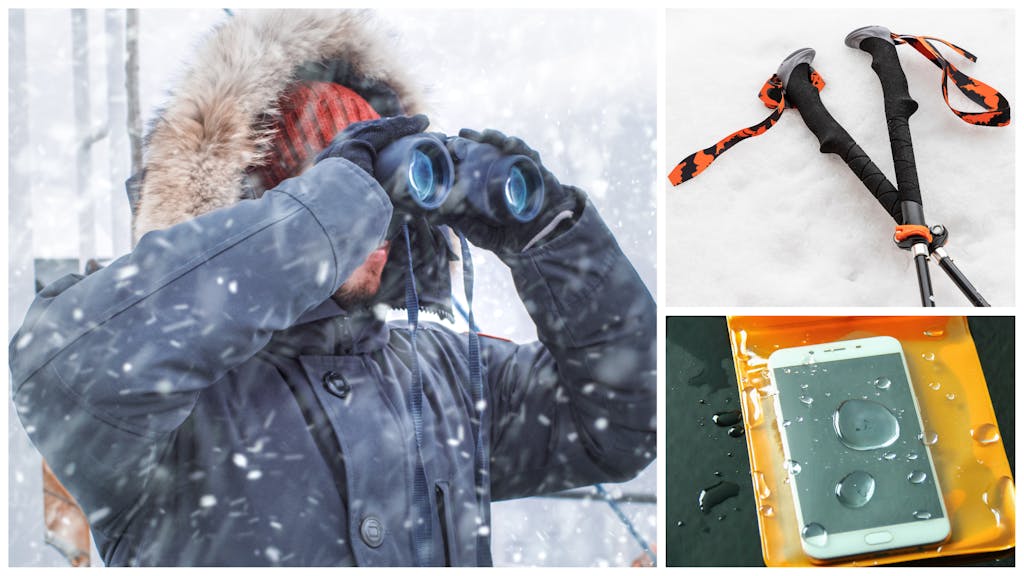
Binoculars for wildlife spotting, trekking poles for uneven ground and a see-through dry bag for your smart phone are among the items you may want to pack.
You may also want your own walking poles.
We recommend a long-lens digital camera, although you will probably need a tripod. A high-quality mirrorless camera with a built-in zoom can work as well.
Are children allowed? Is this a good trip for them?
Expedition ships generally do not have children’s facilities or programs. Silversea does not allow children younger than 5 to board Zodiacs for excursions. Older children who are curious about nature, climate and wildlife may enjoy the experience, but they won’t find many (or sometimes any) playmates on board. All children – and adults for that matter – must be able to follow directions for safety and other protocols.
Are there medical restrictions?
Most cruise lines leave that up to the passenger and his/her doctor, but some do require medical sign-off. Guests more than 24 weeks into pregnancy are not allowed to cruise. Read more under terms and conditions.
Because you’re going to remote territory, nearly all cruise lines including Silversea require guests to complete a medical questionnaire before boarding.
Before sailing, Silversea requests written notification of a special medical condition, such as an oxygen machine. Guests must bring their own wheelchairs; it’s important to note that limited mobility will affect participation in shore excursions on an expedition cruise.
Be sure to pack (but not in checked luggage) all medications you’ll need, including a few extra days of supply just in case.
What if a medical emergency occurs?
Each crew includes personnel trained to handle medical situations. But if the issue is serious, the guest likely will need to be airlifted to a land-side hospital. Such evacuations can be expensive, and a travel insurance policy that covers such evacuations is highly recommended. (Some cruise lines require it.)
The Arctic’s history, briefly
Do humans live here?

Indigenous peoples have lived in the Arctic for thousands of years, and number as many as 650,000 today across the region. Evidence of human presence in Siberia’s Yana River Valley implies hunting took place there 30,000 years ago. Although indigenous cultures have splintered into various groups – the Inuit, Sami, and Athapaskan peoples in particular – all trace their roots to Central Asia.
A land bridge formed from Russia to North America after the last Ice Age, about 7,500 years ago, and the Inuit eventually migrated from Canada to Greenland more than 4,000 years ago. Iceland, by contrast, was probably first reached by Irish monks, in the 7th century, then settled by the Norse from Scandinavia a century later.
Western trappers and hunters also have left their mark along with World War II soldiers, prospectors and explorers charting transit routes. Although expeditions to reach the North Pole are documented as far back as 1827 – on skis, by sea and even by balloon – it was not touched by outsiders until 1948, when a Soviet group flew three planes to the pole and set up camp.
The region has been exploited for its mineral, gas and oil wealth for decades. Now climate change caused by countries to the south is threatening traditional lifestyles, but an era of self-determination has arrived.
In 1999, Canada converted more than half of its Northwest Territories into Nunavut, creating a huge subdivision that, like Greenland, operates with a degree of autonomy. Only indigenous peoples can hunt certain species in most Arctic countries. The region is still dotted with spartan hunting and fishing camps, some thought responsible for overfishing.
Operators in the Arctic regions are sensitive to minimizing impacts on indigenous communities, and expedition guides will share recommendations for positive interactions.
How fragile is the ecology?
The latest studies indicate the Arctic is thawing at twice the speed of the global average, according to Canada’s Cascade Institute. As its permafrost melts, it emits CO2, mercury, and other heavy metals that harm the atmosphere and threaten infrastructure and indigenous communities. The loss of sea ice causes a rise in sea levels and temperatures, affecting food sources in the ocean and on land.
Who protects the Arctic?
Each country sets its own laws, but most subscribe to international conservation agreements.
Passenger ships are closely regulated and monitored to minimize impact. Most well-known lines, including Silversea, are members of AECO, the Association of Arctic Expedition Cruise Operators, which sets a framework for respecting human and animal life and vegetation and maintaining biosecurity, along with mandatory practices. That means guests can’t wander as freely as they might like, but safety and preservation come first.
